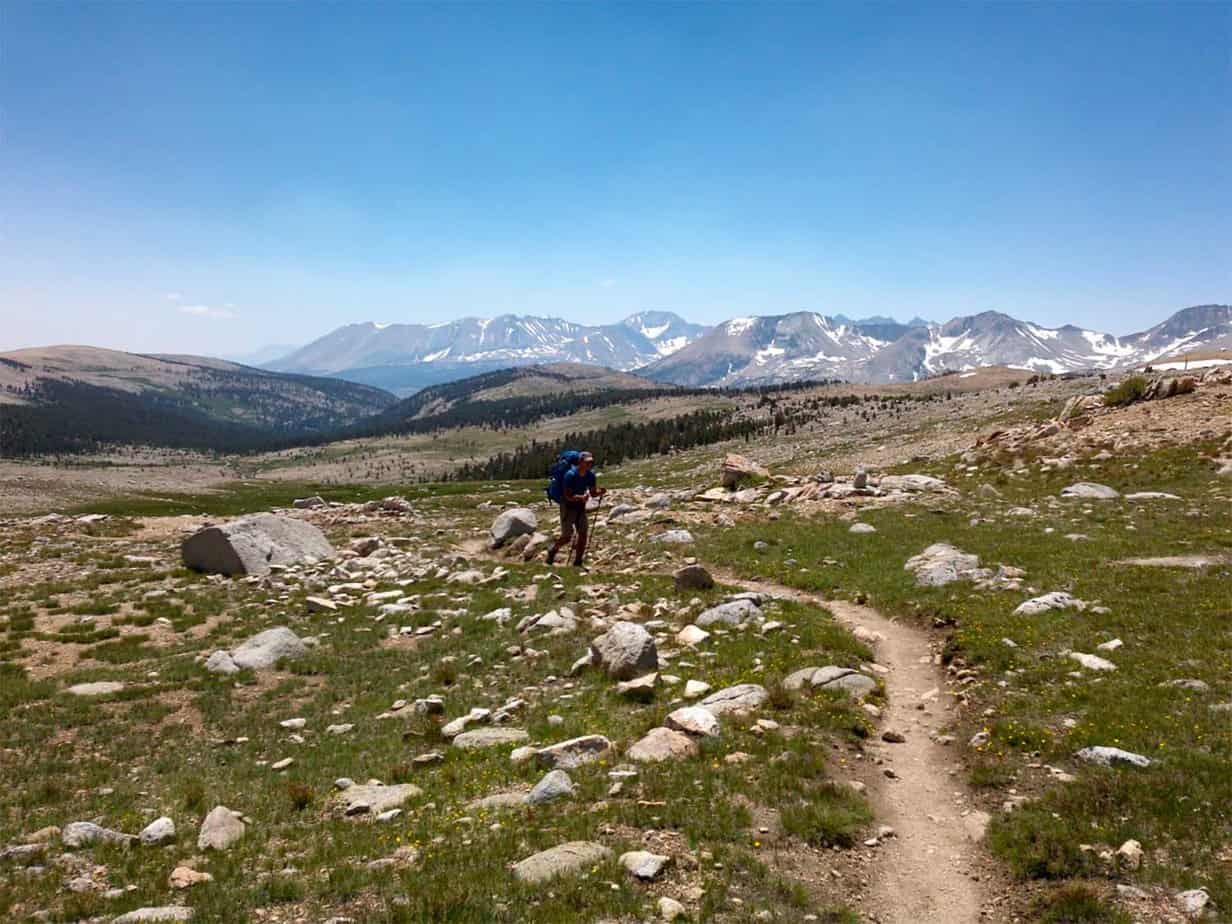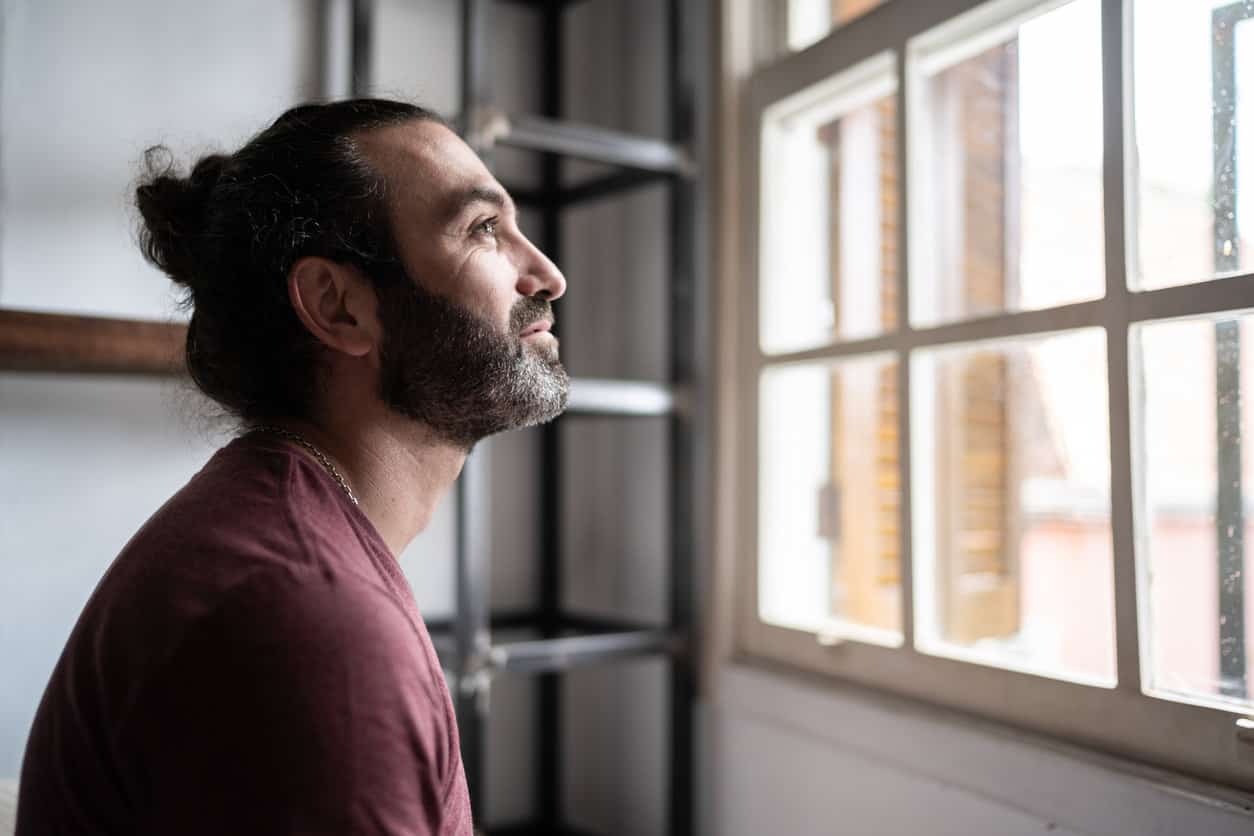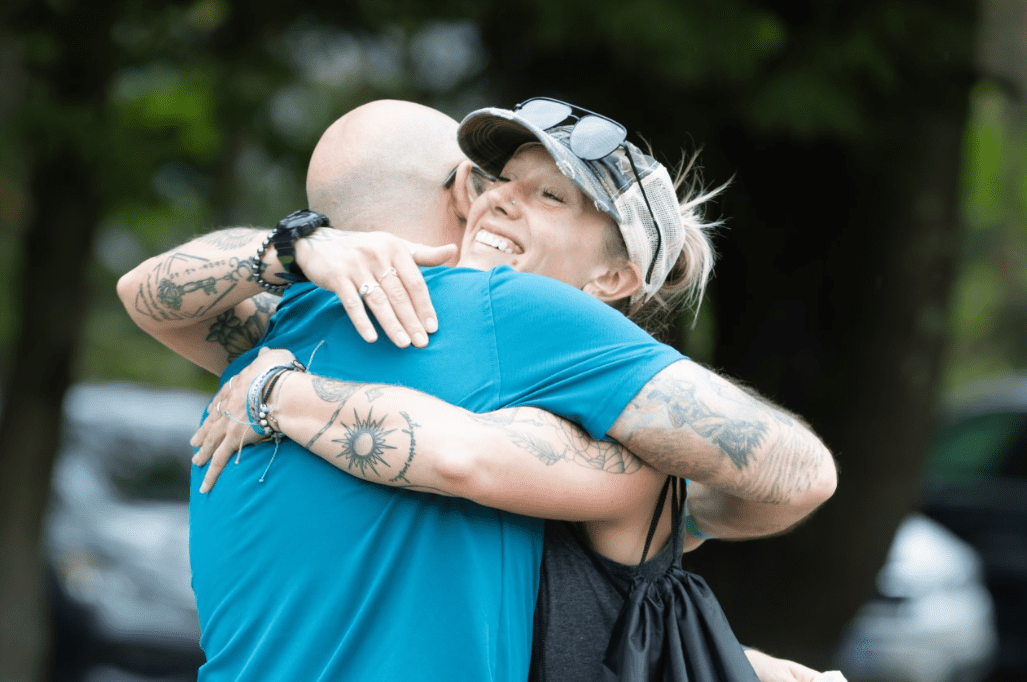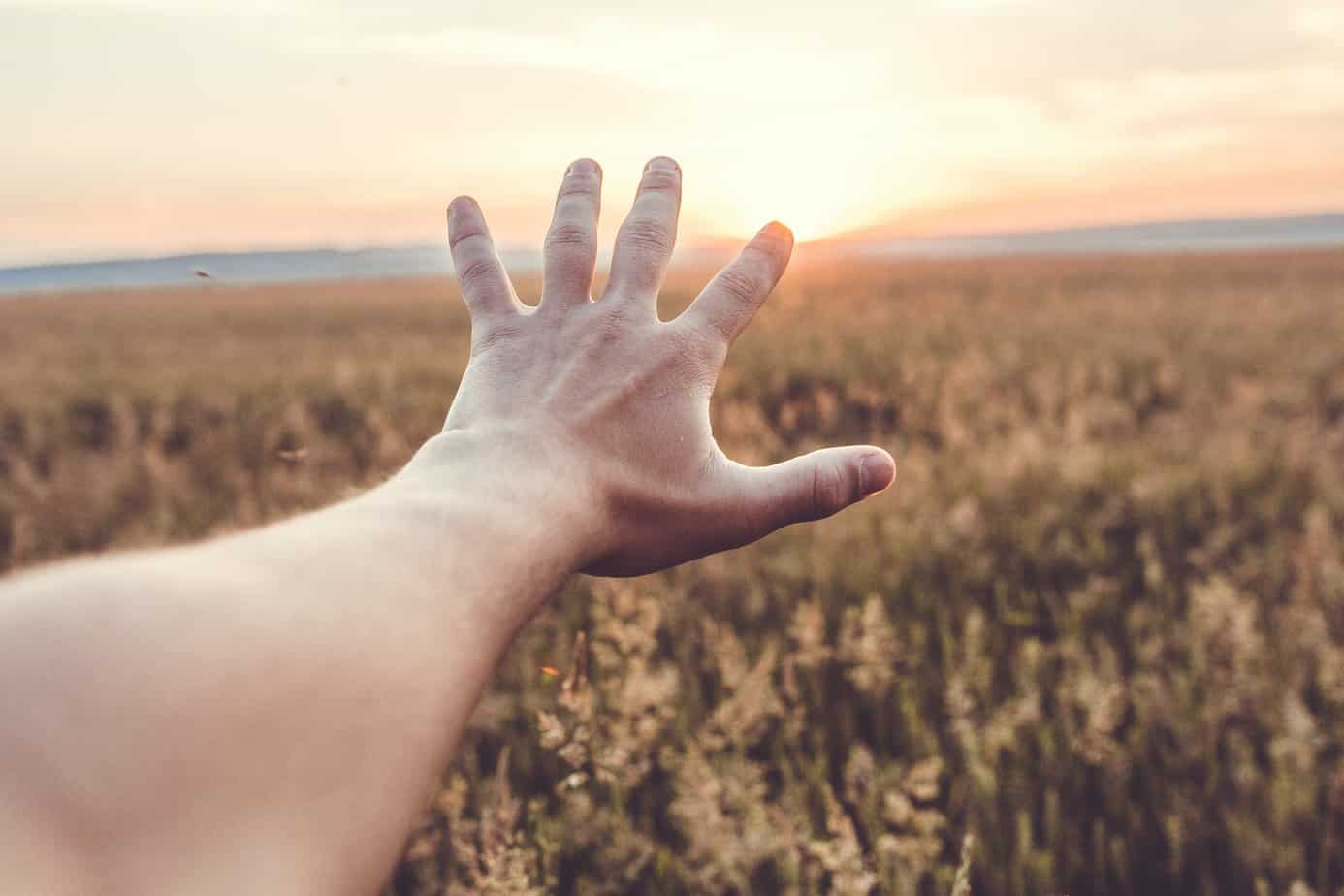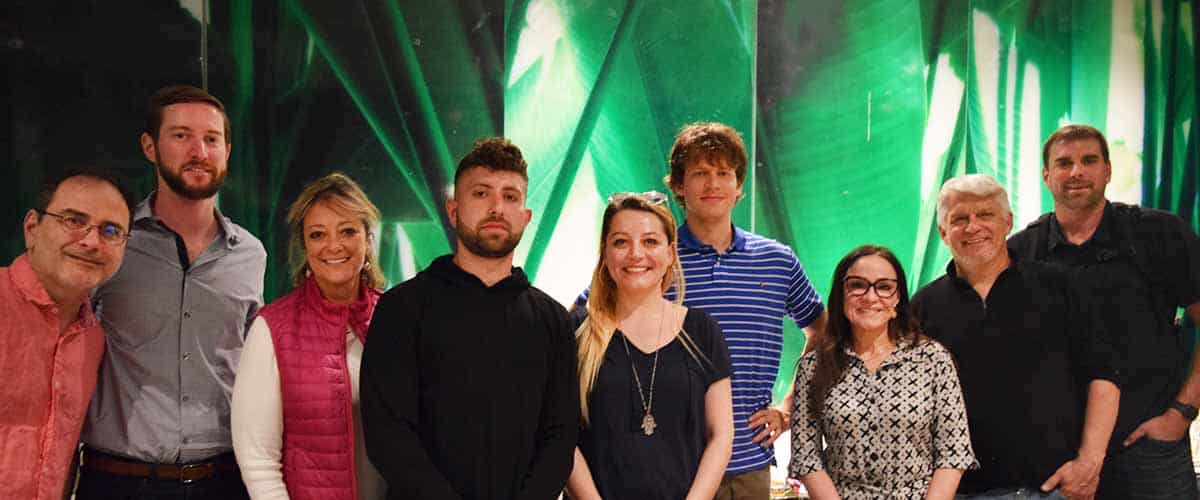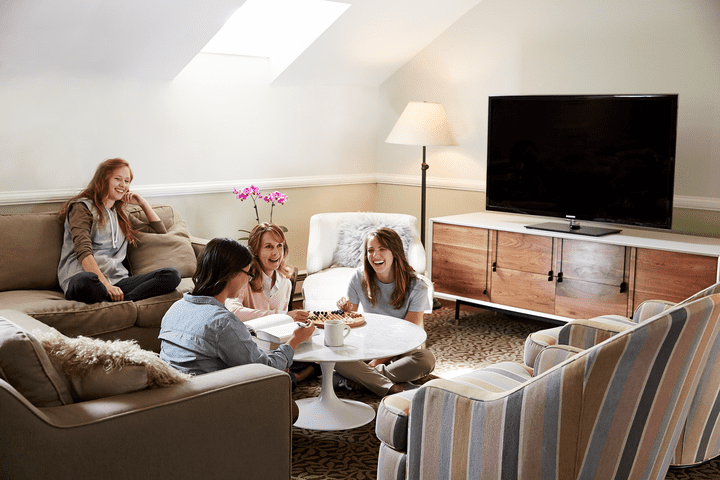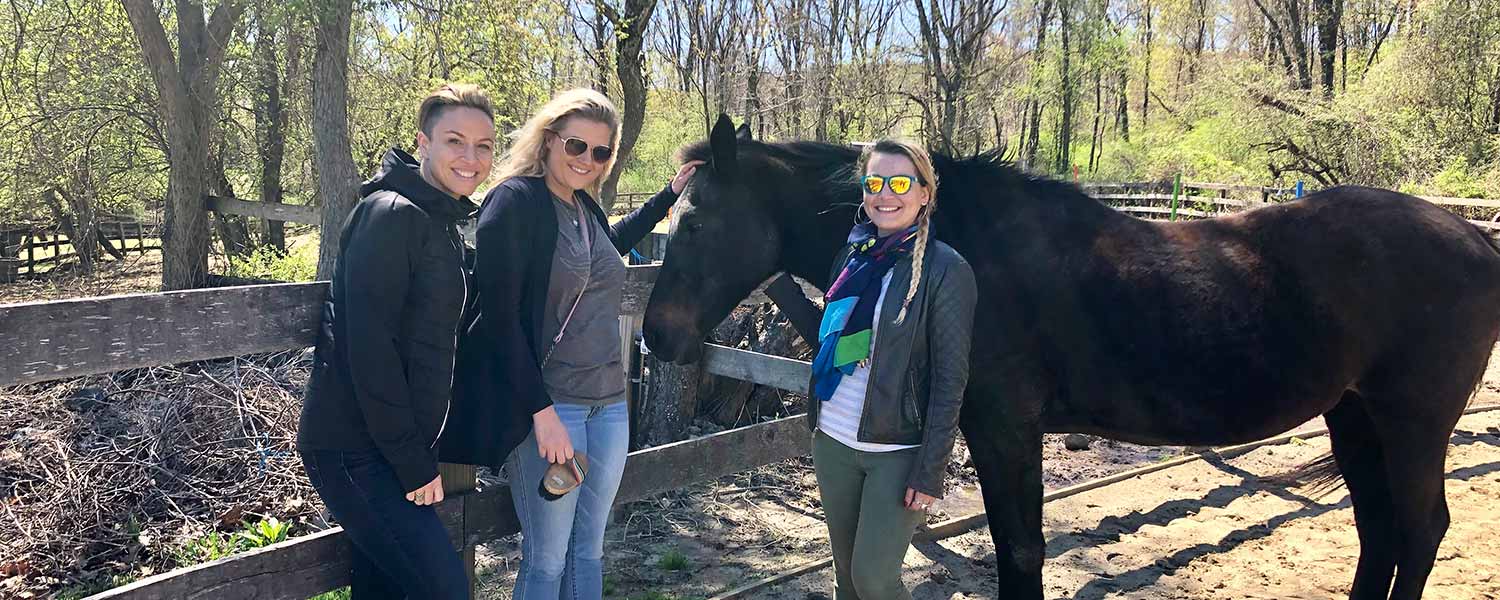Now that I’ve returned from my epic High Sierra hike of the John Muir Trail, I’m often asked the common question, “Well, how was it? Was it totally amazing?” And I have to honestly say that it was not what I had imagined the hike to be. I dreamt about a soft trail, meadows, meandering, bliss, etc. In reality, I felt I went through something fairly traumatic even. I suffered altitude sickness, had severe anxiety, could not breathe properly or sleep. I even lost my hunger for a while. I hiked my way so far into the Sierras that Search and Rescue were not guaranteed to help me in this haven of mighty peaks reaching as high as 14,500′, blinding snow fields, icy nights, and raging, deafening rivers. I also walked my way to some of the most brilliant, natural views I’ve ever laid eyes on in my life. I challenged myself to surpass self-imposed limitations and came out on the other end a changed man with new insights, strength, and ten pounds lighter.
The Sierras provide for a day that begins walking uphill for hours at a time. Up at 6am, you eat, drink, pack up camp and throw it all on your back (40lbs), and walk for 6-8 hours. The uphill is grueling. I was once told that backpackers tend to “pack their fears.” I definitely packed way too many navigational tools like maps, 2 GPS devices, and a compass. Navigation was a fear, and I overcompensated. I was scared of my personal lack of internal navigational skills and instinct. With my fears packed heavy, the boulders, smaller rocks, sun exposure, and steep switchbacks punished my body, and in turn, my mind raced.
I could hear whispers of, “Mark, I really think you got in way over your head this time.” Or, “This is the feeling of suffering, and I want out.” I heard these types of messages sometimes on and off for hours as I ascended 3000-4000′ from in the early morning until lunch. After sucking wind for so long you have to stop, filter water, hydrate, eat some snacks, and then move on again. How did I make it through this trail with all that fear, anxiety, and daily suffering you might ask, as I have asked myself many times?
After pondering my trip, I realized I needed a couple of things. First, I knew I walked my way into this situation and that I was truly the only one that could walk my way out on these two legs. But what drove me to go beyond was the support I received from my 19-year-old son, who didn’t complain once and always encouraged me through his guidance. “Dad, take 50 steps and take a break, then I’ll take another 50 steps and you follow when ready.” This was a one-step-at-a-time approach at 13,000′, where I was gasping for air with every breath. I took such deep breaths with an open mouth much of the time that my lip split from dryness. Even my fellow hikers would approach me with such positivity about what vistas were just around the corner and how this whole experience was unfolding in just the right way for me. There were sweaty smiles on the trail and such examples of strength all around that it was contagious. I wouldn’t have made it if it weren’t for that support all around.
Day to day there were so many dangerous aspects to the hike that I had to ‘stay in the moment’ all the time. I was well-suited for this task due to years of meditation that prepared me for this mindful ritual where I had to closely attend to my health and well-being. I needed to stay in front of the hydration curve, eat 4000-5000 calories a day, and make sure my equipment was holding up. I crossed many severe streams and rivers that, if navigated poorly or crossed too deeply, could easily pull you downstream into a death-defying struggle and drown you. I crossed countless snow fields that required such concentration that one false slip could send you shooting 1500′ down against jagged boulders or into frigid, hypothermic waters. Snow bridges that naturally formed over streams could give way at any time and drop you into a fatal gauntlet. As a hiker, you are taking in both the natural wonders of this historic landscape and the anxiety of danger.
I paused to journal and take pictures between all of the maintenance that was required to complete this journey. Each moment required mental agility that determined the outcome of your experience. I was caught in a hail storm on my first day, which left me nearly hypothermic, and I found myself shivering in my sleeping bag, sipping miso soup to warm up. The last day, I had to quickly navigate my way from the top of a peak, where a sudden lighting storm had developed. My adrenaline threw me over the peak and down the other side at such a rate that I was running with all my gear, searching for safety in a landscape that was totally exposed and vulnerable.
The days moved on and my body ached for hours at a time, my muscles often seizing up and cramping and my lungs burning, to finally reach a vista that can and will forever inspire poems by hikers – young and old. Such beauty often brought me to tears of joy until I had to move on, making my way to the next designated point. The challenge of suffering for hours results in a brilliant albeit short-lived glimpse of beauty. This made me realize there’s so much work involved in any worthy journey and that the payoff can be truly life-changing.
If it wasn’t hard you, wouldn’t appreciate nature’s brilliant and raw canvas before you. I went beyond my own preconceived limits to find a new me, and to see with new eyes, nature at its finest. The new me developed bigger comfort zone that developed in those challenging weeks and a greater appreciation of planet Earth. Living in our plush homes with a false sense of security is needed if we are to raise healthy families and thrive. But when you’re out in dramatic landscapes, like those in the High Sierra, you realize there is a kind of giving and taking that happens instantly to create a homeostasis of balance.
Imbalance is rectified quickly in the wild. If you are given a moment of rest or some gift of beauty that takes you aback, Mother Nature will swiftly teach you the balance of things by providing you with a personal challenge, testing your limits, muscularly, mentally, emotionally or more importantly, spiritually. In the face of my hourly challenges, I began to talk to someone out there in the ether, out of sheer desperation, maybe. Call them my angels, ancestors, spirit guides, but I soon recognized that I was already being watched over and protected. My trip was full of synchronicity, blessings, teachings, and awe. There was an undeniable master plan at play. Faith is key. I had to take that leap. For me spirituality is nature.
Lessons I Learned
Have faith in a master plan that is unfolding now to support you. Have a strong support network around you that is positive and folks around that have been there, and done that, because they can give you such valuable insight. Know that you are stronger than you think in your limiting brain. Take it one step at a time while being very present to the path you are currently stepping on. Make “s**t happen.”
At the end of the day, I can clearly see that the new me was not easily attained, and I might not be running back out there any time soon to hike those Sierras. But I am so grateful for this opportunity to go away for three weeks and test my own limitations, breakdown the old version of me, and build myself anew. Growth happens on the other side of challenge, discomfort, and flying faithfully out of the chrysalis to the more vital, strong, and deeply spiritual person I am today. Spirituality is a verb in my book. I must do and create this experience by merging with the nature of things.
Surrender to what is. Let go of what was. Have faith in what will be. – Sonia Ricotti
If you or a loved one is struggling with addiction, Mountainside can help.
Click here or call (888) 833-4676 to speak with one of our addiction treatment experts.

 By
By 